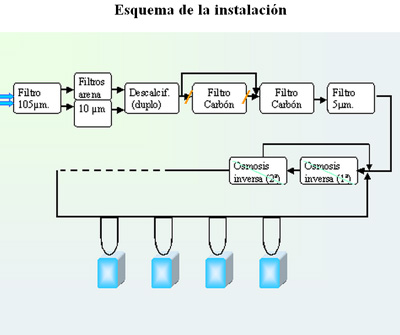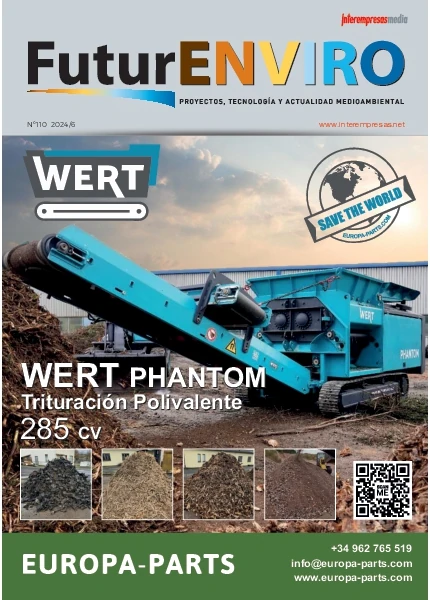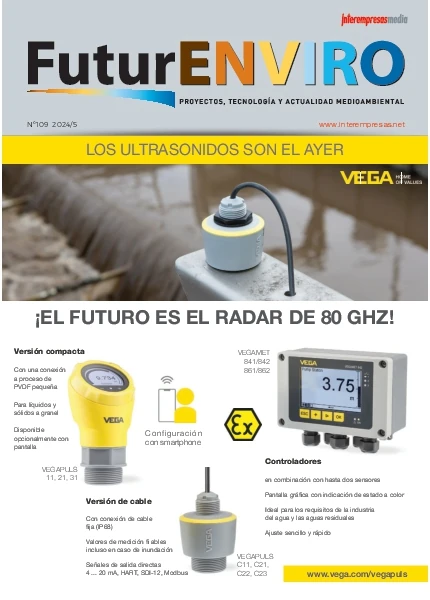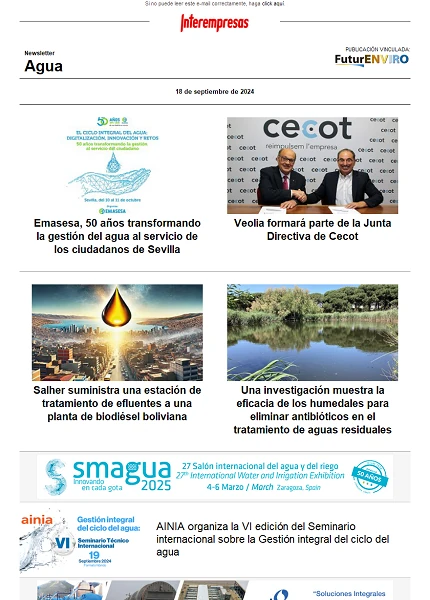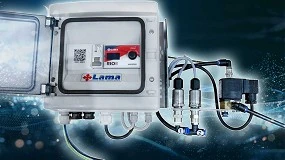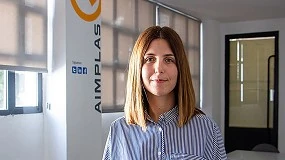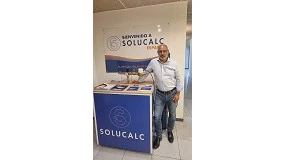El tratamiento específico del agua aplicado al ámbito sanitario
15 de septiembre de 2010
La necesidad de una mayor calidad del agua, ultrapura, utilizada en la preparación del líquido de diálisis (LD) derivada principalmente de la utilización de dializadores de alto flujo con elevadas probabilidades de retrofiltración y la denominada técnica online, infusión del propio LD al paciente, establece la necesidad de nuevos elementos y/o configuraciones en los tratamientos de agua, de tal manera que no solo se consiga esta calidad del agua de forma inmediata a la instalación o modificación del tratamiento sino que permanezca a lo largo del tiempo de forma fiable, tanto en calidad como en cantidad, pues el agua va a suponer más del 96 % del LD.
Existen varias recomendaciones, muy generalizadas, de cómo debe ser un tratamiento de agua que alcance la calidad de agua ultrapura una vez pretratada: doble etapa de ósmosis, o una etapa con un segundo elemento compuesto por una de las siguientes opciones o combinación de ellas: a) lámpara U.V. más ultrafiltro; b) ultrafiltro; c) electrodesionizador. A la vez es necesario diseñar e implementar elementos que ejerzan una función de limpieza que proporcionen el retardo del deterioro de la calidad y cantidad del agua producida por la pérdida de eficacia de los diferentes componentes del tratamiento, debido principalmente a la acumulación en la membrana de osmosis de los elementos por ella retenidos.
Tan importante como el tratamiento de agua es la distribución de la misma hasta los monitores de hemodiálisis: el agua tratada almacenada es susceptible de sufrir contaminaciones; no deben existir fondos de saco, piezas con hendiduras o formas que puedan servir de reservorio o impedir el flujo laminar, incluyendo como parte de la red de distribución el propio tubo de toma de agua del monitor. Por todo ello el agua debe de ser distribuida de manera este en permanente circulación, incluido hasta el monitor, a velocidad en torno a >1m\1s\2regresando la no utilizada al tratamiento de agua y ser de nuevo tratada.
Diseño y desarrollo de una nueva planta de tratamiento de agua
El Servicio de Nefrología, junto con la dirección del Hospital Universitario de La Princesa de Madrid, estableció la necesidad de un nuevo tratamiento de agua y red de distribución para la Unidad de Hemodiálisis debido a la antigüedad del anterior, que era capaz de mantener los niveles químicos y bacteriológicos de acuerdo a las normas establecidas, pero con la inseguridad constante de que esto se mantuviera a lo largo del tiempo o entre controles, lo que impedía abordar el empleo de nuevas técnicas de hemodiálisis (on line) que requerían una seguridad total en la calidad del agua.
Puntos en los que se basaba la inseguridad:
- Configuración de la ósmosis inversa ya obsoleto, con mala estanqueidad entre membranas que podía implicar durante las fases de parada el paso de agua a través de ellas; una sola etapa de la misma y sin elementos de desinfección y/o desincrustración de la misma, por lo que debía realizarse con elementos externos a la misma que obligaba a paradas prolongadas.
- Almacenamiento de agua tratada en depósitos no estancos.
- Red de distribución con numerosos fondos de saco, incluidos los tubos de alimentación de agua de los monitores, tuberías excesivamente grandes que implicaban una velocidad < 0’3 m\1s\2y la posibilidad de que no circulase a sección de tubo completa, realizadas en PVC que es capaz de degradarse con el tiempo y aportar elementos indeseables al agua incluidos los pegamentos utilizados en su montaje.
- No existía ningún elemento en la red de distribución para evitar contaminaciones.
- En caso de fallo de la ósmosis había que paralizar las sesiones de hemodiálisis o dializar con agua pretratada.
- Cuando era necesario efectuar una desinfección de la red de distribución y almacenamiento sólo podía realizarse en domingo debido al elevado tiempo necesario.
Al abordar el nuevo diseño del tratamiento del agua y empezar a dar soluciones a los problemas mencionados surgieron otros nuevos derivados de los nuevos diseños: Si almacenábamos agua tratada para garantizar la recomendación generalizada de 24 h. de capacidad de suministro suponía introducir depósitos de una capacidad de ≈10.000 litros, lo que implicaba una gran cantidad de espacio y una reforma de la estructura arquitectónica donde fueran a ser ubicados debido al peso, añadiendo la dificultad de introducir depósitos de esta capacidad cerca de la unidad.
Si realizábamos instalaciones de la red de distribución denominadas en U, llegando hasta el monitor para eliminar la manguera de toma de agua, con el fin de evitar los fondos de saco, corríamos el riesgo de que un movimiento brusco de un monitor pudiera derivar en cortes de agua al resto de la unidad, o una rotura en la red dejara sin agua a la misma. La novedad de los tratamientos denominados Online, es decir alimentación de agua directa a los monitores desde el tratamiento sin almacenaje de agua tratada, nos parecía que podía solucionar muchos problemas además de parecernos la mejor garantía de calidad de agua de manera constante, unido con otros aspectos de la instalación, pero también surgieron otros nuevos problemas que nos obligaron a dar otras soluciones. Finalmente se optó por un tratamiento de este tipo, de la empresa Lauer, comercializado en España por el grupo Palex.
Detalles de la instalación
La alimentación de agua bruta fue seguramente una de las opciones más complicadas. Al no almacenar agua tratada se hacía necesario garantizar el suministro de agua bruta constante, pues en el caso de corte de la misma automáticamente se paraba la producción de agua tratada. Lógicamente si teníamos que almacenar agua bruta nos encontrábamos con los mismos problemas mencionados para el caso de almacenaje de agua tratada. La solución fue realizar una doble acometida de agua bruta, una totalmente individual para la unidad, con un grupo doble de bombas (trabajo y reserva) que toman agua directamente del primer aljibe donde entra el agua de la empresa suministradora al hospital, actuando esta acometida como prioritaria; la segunda acometida proviene de la red de distribución del propio hospital, que toma agua de un segundo aljibe y actuando ésta como reserva. Ambas cuentan con sus correspondientes alarmas individualizadas de disminución de presión. Este diseño ha evitado la necesidad de almacenar agua para hemodiálisis. La cantidad de agua almacenada por los aljibes del hospital es de aproximadamente 500 m3.
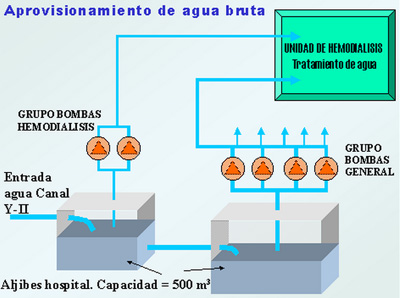
Resultados
Los análisis del agua obtenida a lo largo de estos meses de funcionamiento indica una calidad de agua altamente purificada, con los controles microbiológicos negativos (UFC/ml) y endotoxinas por debajo de 0,03 UE/ml; en los cultivos microbiológicos se produce alguna excepción que más parece derivada de las propias manipulaciones durante las tomas de muestras.
El aluminio, indicativo de calidad química, era el elemento que más complicaciones nos causaba con la antigua planta y nos obligaba, como ya he mencionado, a trabajar con un porcentaje de rechazo muy alto. Actualmente se mantiene por debajo de los 5 g/l, límite detectable por el laboratorio; el valor máximo generalizado (normas UNE, AAMI, etc.) es de 10 g/l. El resto de elementos químicos contaminantes se mantienen por debajo de los límites máximos admisibles internacionalmente por las diversas normas, incluso por debajo de los niveles detectables. El rechazo iónico de la ósmosis (relación entre conductividad del agua de entrada a la ósmosis y del permeado o agua tratada), es > 99 % para valores de la conductividad de entrada >100 μS, y > 98% para valores de conductividad de entrada <100 μS.
